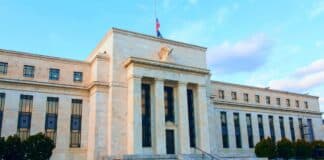Price metric tracked by Federal Reserve rose 5.8% last year, sharpest increase since 1982.
QUICK FACTS:
- A measure of prices that is closely tracked by the Federal Reserve rose 5.8% last year, the sharpest increase since 1982, as consumer spending collided with supply chains issues to raise the costs of food, furniture, appliances and other goods, according to The Associated Press (AP).
- Friday’s report from the Commerce Department also said that consumer spending fell 0.6% in December.
- Stubbornly high inflation has hammered household budgets, wiped out last year’s healthy wage gains and posed a severe political challenge to Joe Biden and Democrats in Congress, AP notes.
- Bottlenecked supply chains and shortages of components, like semiconductors, have left many retailers and auto dealers with fewer cars and other goods to sell.
- AP notes how McDonald’s said on Thursday that higher costs for food and paper products and the need to raise pay to attract and keep workers eroded profits even after it had raised prices 6% last year.
- And how Procter & Gamble recently said it would have to raise prices for detergents like Tide, Gain, and Downy and for personal care products, the company also anticipating price increases for chemicals and other commodities this year.
WHAT THE FEDERAL RESERVE CHAIR SAID:
- Federal Reserve Chair Jerome Powell acknowledged at a news conference Wednesday that inflation has gotten “slightly worse” in the past month, according to AP.
- Powell cautioned that higher prices “have now spread to a broader range of goods and services.”
BACKGROUND:
- AP explains: “The inflation figure that the government reported Friday is its personal consumption expenditures index. Though the consumer price index is a better-known barometer, the Fed tends to track the PCE in setting its interest rate policies. The PCE index tracks actual purchases consumers make each month, while the CPI follows a fixed market basket of goods.”
- Now the Federal Reserve is signaling plans to raise interest rates multiple times this year, beginning in March.
- Chair Jerome Powell also made clear that the Fed will move to shrink its huge $8.9 trillion of bond holdings soon after it starts raising rates, another step that will likely tighten credit, slow spending and potentially weaken the economy, AP reports.
- Powell also said the Fed is increasingly focused on the question of whether rising wages are acting as a primary driver of inflation, by forcing companies to charge more to cover their higher labor costs. Such a “wage-price spiral,” which the United States hasn’t experienced since the 1970s, can make inflation difficult to cool.






